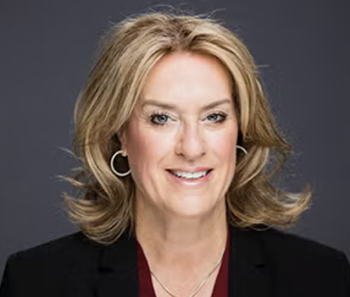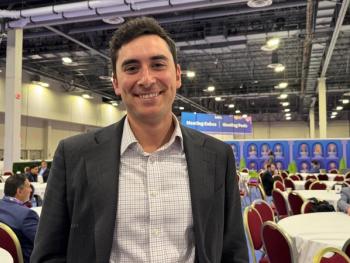
Hospitals continue to struggle with IV fluid shortage, with some still delaying surgeries
Some health systems have developed conservation strategies, and Baxter International has resumed production at its North Carolina plant. But some facilities are still facing serious challenges.
Hospitals and health systems across America have been wrestling with a shortage of intravenous fluid supplies in the wake of Hurricane Helene.
The remnants of
Last week, Baxter shipped out its first batch of IV fluids from its North Carolina plant since the hurricane, a welcome milestone for the facility.
Still, analysts expect hospitals are going to deal with
“The folks in rural areas, rural hospitals, critical access care points, they're still really struggling,” Cotter says. “Many of them have not resumed elective procedures, which really hurts their bottom line and their sustainability as a healthcare facility. They're going to feel the effects of this for a long time, as they try to play catch up.”
Elective procedures tend to be more profitable for health systems, and are more likely to be reimbursed by commercial insurance. With some facilities having to pause elective procedures or delay at least some of them, they are seeing significant financial headaches, Cotter says.
Nearly one in five (17%) of the providers surveyed said they have postponed elective surgeries, and another 58% said they’re considering delaying procedures in the future.
Elective surgeries aren’t necessarily minor procedures, Cotter notes. They are procedures that often are necessary to improve the patients’ quality of life, and delaying those surgeries can increase the risk of complications.
“Elective doesn't mean optional,” he says “Elective just means not urgent, but it is still very important for those patients.”
Larger hospitals and health systems are generally faring better, Cotter says. Smaller hospitals and healthcare providers don’t carry as much leverage from suppliers, so they’re contending with more challenging shortages.
“They just don't have access to the same negotiation and partnerships and contracts that larger hospital systems do,” Cotter says. “So they're still really struggling.”
Uncertainty persists
While Baxter has resumed production lines, Cotter says it’s unclear when the company will be able to match the production levels before the plant was flooded.
“They anticipate all their production lines to be open by the end of this year,” Cotter says. “But that doesn't mean they're at full capacity, and I think that's important.”
Baxter says it is making strong progress, but the company hasn’t said when it will be at normal capacity.
In a message on its website, Baxter says, “While we currently expect that all lines will be restarted by the end of the year, we do not yet have a timeline for when we expect North Cove production to be fully restored to pre-hurricane levels.”
Baxter hopes to resume production of peritoneal dialysis (PD) solutions and irrigation in early December. Baxter is the chief supplier of peritoneal dialysis solutions.
Cotter says the uncertainty around when the plant will resume full production of those products is “a little scary” for patients who use peritoneal dialysis to manage their kidney disease at home.
“I think that uncertainty is really difficult for a lot of patients who do not want to go on hemodialysis at a facility, but have relied on peritoneal dialysis at home to maintain a certain lifestyle,” Cotter says.
Conservation measures may last
Some hospitals and health systems, notably larger facilities, have deployed conservation strategies with some success.
One facility has cut its consumption of IV fluids by 50% without sacrificing patient care, Cotter says.
Some providers are simply opting to use oral hydration more often on patients who are dehydrated, rather than using an IV bag.
Some hospitals and physicians say they’ve found enough success with their conservation measures that they will continue to utilize them even when supplies improve.
Cotter says providers are telling him they are utilizing IV fluids for patients who need them, and when in doubt, doctors are erring on the side of IV treatment. But he says many of the conservation measures will continue because hospitals and physicians are finding they can use them while still preserving top-notch care.
“They're going to reduce their consumption anyways, because the patient care is still high quality, and they just eliminated a lot of waste,” Cotter says. “So I think that that's probably noteworthy.”
Bigger conversation needed
The shortage of IV fluids from the Baxter plant represents yet another disruption in healthcare supplies. Over the past two years, hospitals and health systems have encountered shortages of
Hospitals feared an even greater shortage of IV supplies when Hurricane Milton hit Florida, because B. Braun Medical owns another key production plant in Daytona Beach. Thankfully, the plant was spared serious problems. Cotter says he doesn’t know what a disruption to that plant would have done to already low supplies of IV fluids, and he’s relieved the storm didn’t disable the facility.
But Cotter also points out the need to have broader conversations about what the government can do to help ensure more resilience of supply chains. As Cotter says, no company will choose to build 10 or 20 small facilities over one large, centralized plant, because it wouldn’t be financially feasible.
“We need to have a real conversation about where we're building our manufacturing plants and making sure we're building resiliency into our critical supply chains,” Cotter says.
Ultimately, the government is going to need to foster public-private partnerships to develop more durability in the supply chain. He says public investment is going to be needed, especially considering the modest margins for generic drugs and supplies such as IV fluids.
Cotter says the time is now to have a broader conversation on the healthcare supply chain.
“It would be useless to build a resilient supply chain for today's challenges,” Cotter says. “We need to build one for the next 20 years, and we need to build that today.”








































